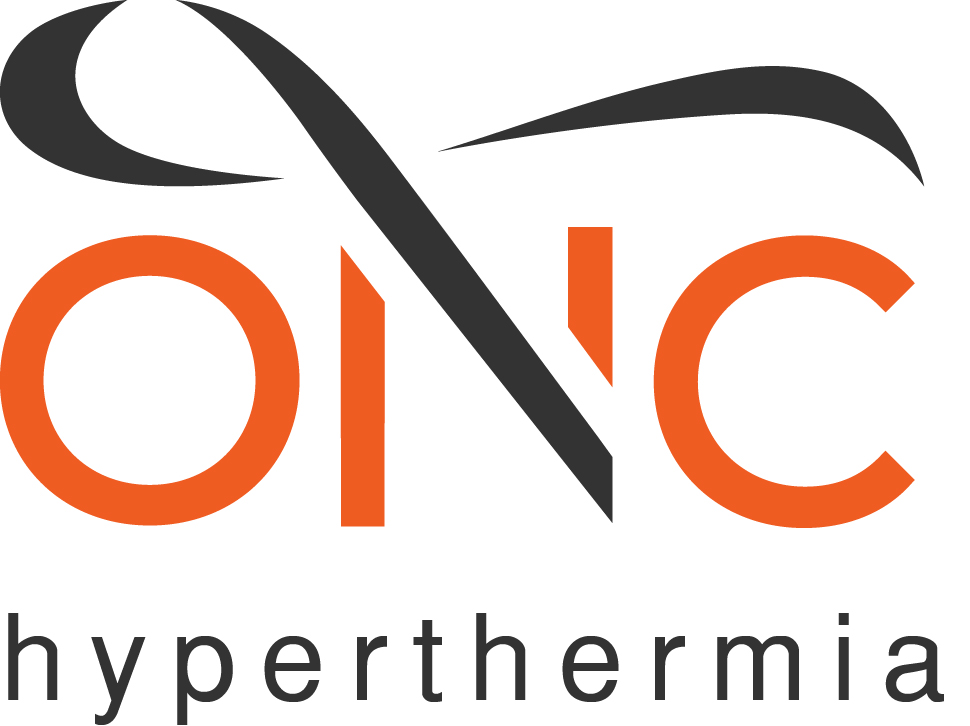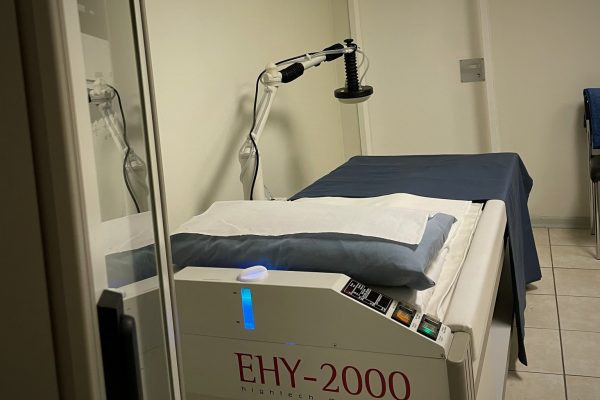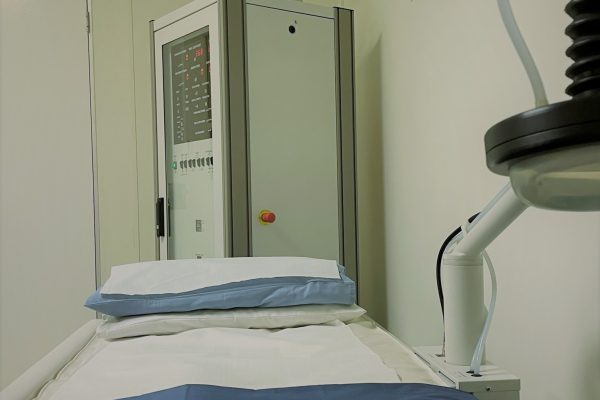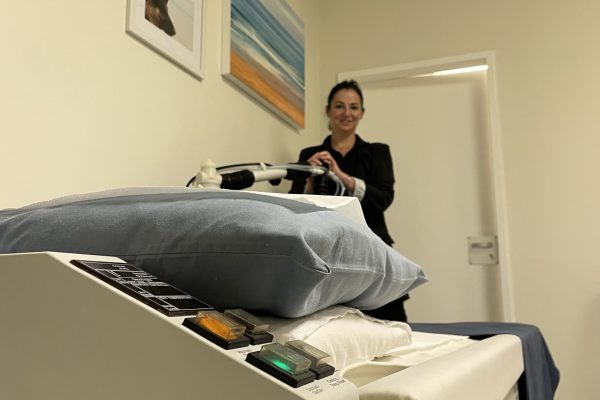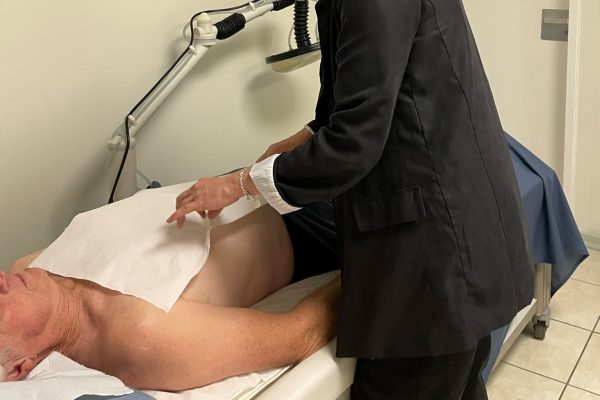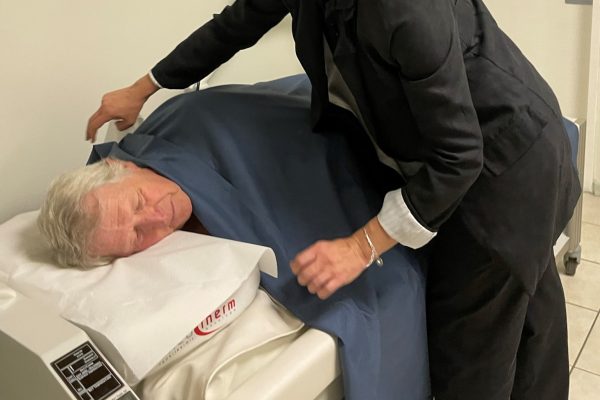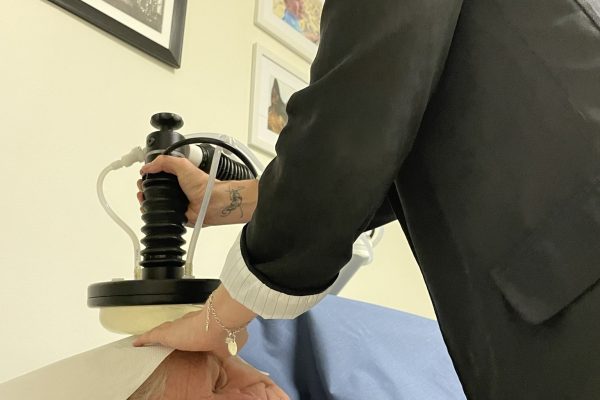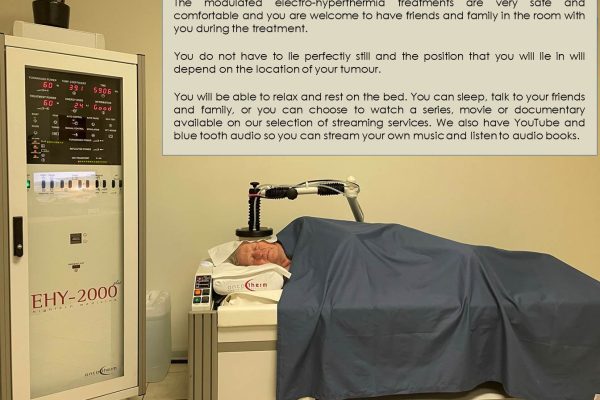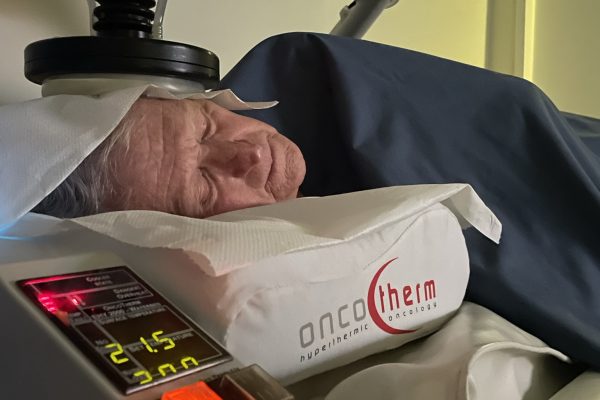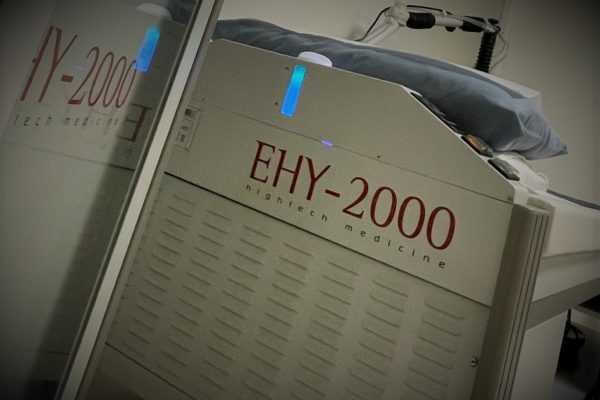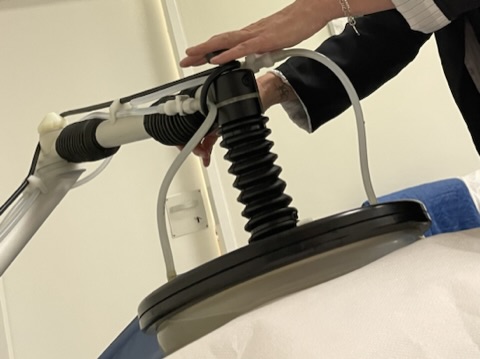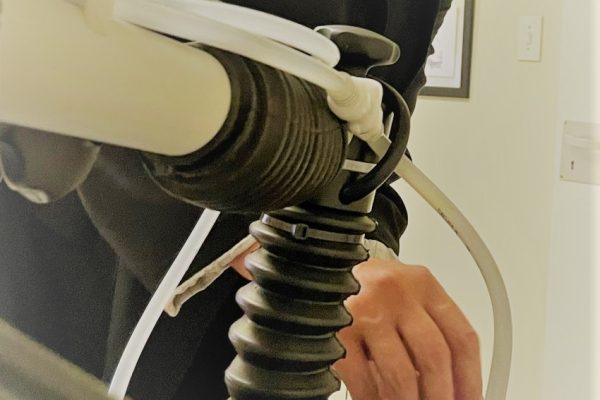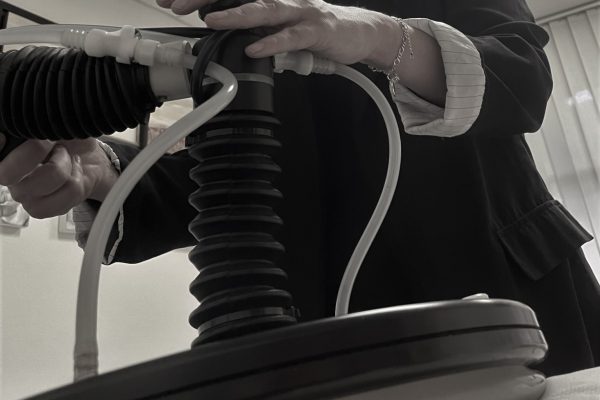LEARN MORE
PROVIDING EMPOWERING INFORMATION FOR BETTER DECISION MAKING
INTRODUCTION VIDEO (COMING SOON)
ONC-HYPERTHERMIA TREATMENT PROCEDURE AND PATIENT EXPERIENCE
While we finish up making our great introduction video, please enjoy this bit of information.
The Cancer Box presents a ‘How and Why’ interview with a hyperthermia specialist, about hyperthermia and it’s role in cancer treatment.
When is Hyperthermia treatment used?
Your oncologist may recommend that you add Hyperthermia treatments to your chemotherapy or radiotherapy, if you have a cancer that is known to be responsive to Hyperthermia. Hyperthermia may be added to your treatment if you have a recurrence in a location that has already been treated with radiation or if you have already had chemotherapy. Hyperthermia is often used to sensitise tumours that are known to be resistant to radiation or chemotherapy.
In some rare instances Hyperthermia may be used by itself, in between chemotherapy or radiotherapy. Studies have been conducted on tumours of the gastrointestinal tract, urinary tract, liver, lung, head and neck, brain, cervix, and prostate, as well as on melanomas, and sarcomas. While there are some tumour types for which the use of Hyperthermia is still considered experimental, there are many tumour types with a large amount of research. The most researched tumours are cervical cancer, head and neck cancers, recurrent breast cancers, and sarcomas. [9-13] Speak to your oncologist if you think you may have a tumour that could benefit from the addition of Hyperthermia to your treatment regime.
How does Hyperthermia sensitize tumours to treatments?
The increase in heat causes an increase in the blood flow to the tumour. This increased blood flow results in an increase in the concentration of the chemotherapy in the tumour. There is also more oxygen brought to the tumour by the blood. This is important because radiotherapy causes more damage when there is oxygen in the tumour. [3,4]
The main action of radiation therapy and most chemotherapies is on the DNA of the tumour cells. However, the cells will try to repair the damage done by radiation and chemotherapy. This repair process is very difficult under heated conditions and therefore, on top of increasing the cell killing effect of the treatments, hyperthermia also inhibits and slows down the tumour cells ability to repair the damage done by the treatments. [5,6]
Heating the region also stimulates an immune response at the site of the tumour which can support and promote the body’s ability to fight against the cancer. [7,8]
How is Hyperthermia treatment administered?
Various types of Hyperthermia have been developed to heat tumours at different sites within the body. The methods used to heat tumours include antenna-array focused electromagnetic energy, radio-frequency inductive or capacitive heating, ultrasound, or infra-red heating.
Whole body Hyperthermia
Whole body Hyperthermia aims to raise the temperature of the entire body. There are several institutions in Europe and America which are applying whole body Hyperthermia for people in whom the cancer has spread to various parts of the body. Studies are already available, and more studies are being conducted on the use of whole-body Hyperthermia combined with chemotherapy. The results are positive. [14-16]
Increasing the whole-body temperature increases the heart rate, breathing rate and perspiration. The functioning of the kidneys is also altered during whole body Hyperthermia. This makes whole body Hyperthermia challenging to administer and to ensure a safe treatment, the patient must be carefully monitored to make sure that their body is not under too much stress. Whole body Hyperthermia is therefore only done by experienced clinicians in controlled environments with specialised equipment.
Regional Hyperthermia
Regional Hyperthermia involves the heating of the general region in which the tumour is found (for example the abdomen, chest area or a limb). Regional heating is most achieved by isolated perfusion of organs or limbs, or by irrigation of body cavities. These techniques are invasive and carry high risks and therefore also require experienced and skilled clinicians. Deep heating techniques using radio-frequency and microwave energy have also been developed. Challenges with these techniques include burns and damage to healthy tissue.
Local Hyperthermia
Local Hyperthermia involves heating up only the tumour using external or internal energy sources. Different types of energy can be used, such as radio-frequency, microwaves, or ultrasound. For superficial tumours, infrared light can also be used to heat the tumour.
Some tumours are accessible through body cavities. In these cases, the probes can be inserted via the body cavity (eg oral cavity, rectum, vagina, urethra), instead of surgically inserted (as is the case in interstitial heating). Body cavities, such as the mouth, rectum, and urethra, provide access to tumours of the digestive tract, urinary tract, and prostate (in men). In women, the vagina can provide access to some tumours of the female reproductive system. In these cases the probes can be inserted directly.[18]
Which Hyperthermia technology is used at our practice?
We use a technique known as modulated Electro-Hyperthermia. Modulated Electro-Hyperthermia is a form of local Hyperthermia that can selectively heat up tumours using low frequency radio waves. The technique is suitable for tumours regardless of their depth or location in the body.
The device used is manufactured by a company called Oncotherm GmBH. The technique involves lying on a bed that has a water mattress and an electrode built into the base.
A second electrode, housed in an adjustable applicator, is then placed over the treatment area. The two electrodes use capacitive coupling to generate an electromagnetic field using radio-frequency energy. The frequency used is very low. At 13.56MHz the frequency is even lower than the lowest frequency used for radio stations, and it is therefore very safe.
The device has a self-selecting technology which is based on the difference in the biophysical properties of malignant tissue and healthy tissue. The malignant (cancer) tissue responds differently to the electromagnetic field and one of the consequences of this is that the cancer tissue begins to heat up. The device also has a patented amplitude modulation which enhances the selection of the malignant tissue over the healthy tissue.
What are the risks associated with Hyperthermia treatment?
The technique that we use is very safe. There is a very small (1%) chance of developing a small blister on the skin in the treated area if the treatment is too hot. There is also a chance that, if there is a lot of fatty tissue in the treatment area, the fatty tissue may suffer a low grade burn resulting in a round, painful lump in the fatty tissue, which disappears over six to eight weeks.
However, this is not common and only happens in roughly ten out of a hundred patients.[10]
If the brain is being treated, you have a risk of developing headaches and nausea after the treatment that may persist for a few hours, and there is a small risk of having a seizure during a treatment to the brain. Although brain tumours independently increase your risks of having a seizure, as does radiation to the brain.[18]
What can I expect during a Hyperthermia treatment?
Before the treatment you will be asked to remove anything metal or anything that may interfere with the electromagnetic field. This includes jewellery, clothing with zips and buckles, cell phones, wallets etc. You may also be asked to empty your bladder.
During the treatment you will lie on the Hyperthermia bed, with the treatment area covered with medical paper toweling, and the electrode will be placed onto your body. The electrode will begin to feel warm during the treatment, however it should never feel uncomfortably hot. The process should be pain free and relaxing. Most people fall asleep during the treatment.
The duration of a Hyperthermia treatment can vary from 30 minutes to 1½ hours, depending on the site of the tumour. The treatment is very safe, and you are therefore able to have friends or family members in the room during the treatment. You will also be able to listen to music, or audio books, or watch movies or shows on our screen during your treatment.
Is Hyperthermia treatment covered by Medical Aids in South Africa?
Hyperthermia is currently only covered by three medical aids in South Africa with other applications in process.
Am I eligible for Hyperthermia treatment?
Your first port of call is your Oncologist. Your Oncologist will be able to tell you if you are eligible for treatment. If you are eligible for treatment or would like more information, please contact us directly with the contact details below in the footer.
-
Mohamed F, Marchettini P, Stuart OA, et al. Thermal Enhancement of New Chemotherapeutic Agents at Moderate Hyperthermia. Annals of Surgical Oncology. 2003;10(4):463-468.
-
Dewhirst MW, Vujaskovic Z, Jones E, et al. Re-setting the biologic rationale for thermal therapy. International Journal of Hyperthermia. 2005;21(8):779-790.
-
Song CW, Park HJ, Lee CK, et al. Implications of increased tumor blood flow and oxygenation caused by mild temperature hyperthermia in tumor treatment. International Journal of Hyperthermia. 2005;21(8):761-767.
-
Griffin RJ, Dings RPM, Jamshidi-Parsian A, et al. Mild temperature hyperthermia and radiation therapy: role of tumor vascular thermotolerance and relevant physiological factors. International Journal of Hyperthermia. 2010;26(3):256-263.
-
Pandita TK, Pandita S, Bhaumik SR. Molecular Parameters of Hyperthermia for Radiosensitization. Critical Reviews in Eukaryote Gene Expression. 2009;19(3):235-251.
-
Oei AL, Vriend LEM, Crezee J, et al. Effects of hyperthermia on DNA repair pathways: One treatment to inhibit them all. Radiation Oncology. 2015;10(1):1-13.
-
Werthmiller N, Frey B, M, et al. Combination of ionising radiation with hyperthermia increases the immunogenic potential of B16-F10 melanoma cells in vitro and in vivo. International Journal of Hyperthermia. 2016;32(1):23-30.
-
Akutsu Y, Tamura Y, Murakami K, et al. Can modulated electro-hyperthermia (mEHT ) elicit immune reactions? From basic and clinical research. 2014;11(November):2014.
-
Dotta NR, Ordez SG, Gaipl US, et al. Local hyperthermia combined with radiotherapy and- / or chemotherapy: Recent advances and promises for the future. Cancer Treatment Reviews. 2015;41(9):742-753.
-
Minnaar CA, Kotzen JA, Akinwale O, et al. The effect of modulated electro-hyperthermia on local disease control in HIV-positive and -negative cervical cancer women in South Africa: Early results from a phase III randomised controlled trial. PLoS ONE. 2019;14(6):e0217894.
-
Dotta NR, Rogers S, Klingbiel D, et al. Hyperthermia and radiotherapy with or without chemotherapy in locally advanced cervical cancer: a systematic review with conventional and network meta-analyses. International Journal of Hyperthermia. 2016;32(7):809-821.
-
Dotta NR, Stutz E, Liu M, et al. Concurrent chemoradiotherapy vs. radiotherapy alone in locally advanced cervix cancer: A systematic review and meta-analysis. Gynecologic Oncology. 2017;145(2):374-385.
-
Oldenborg S, Griesdoorn V, Van Os R, et al. Reirradiation and hyperthermia for irresectable locoregional recurrent breast cancer in previously irradiated area: Size matters. Radiotherapy and Oncology. 2015;117(2):223-228.
-
Douwes FR, Hospital SG, Str R, et al. Local and whole-body hyperthermia in chemoresistant ovarian cancer. 2013;70(June):83043.
-
Bull JMC, Scott GL, Strebel FR, et al. Fever-range whole-body thermal therapy combined with cisplatin, gemcitabine, and daily interferons: A description of a phase I-II protocol. International Journal of Hyperthermia. 2008;24(8):649-662.
-
van der Horst A, Versteijne E, Besselink M, et al. The clinical benefit of hyperthermia in pancreatic cancer: a systematic review. International Journal of Hyperthermia. 2018;34(7):969-979.
-
K. S. Survival Benefit of Hyperthermia in a Prospective Boost + Hyperthermia for Glioblastoma Multiforme. Elsevier Science. 1998;40(2):287-295.
-
Fiorentini G, Sarti D, Milandri C, et al. Retrospective observational Clinical Study on Relapsed Malignant Gliomas Treated with Electro-hyperthermia Presented at 35 th ICHS, Guangzhou , 2017. 2018;22(February):32-45.
-
Sneed P.K.. Survival Benefit of Hyperthermia in a Prospective Boost + Hyperthermia for Glioblastoma Multiforme. Elsevier Science. 1998;40(2):287-295.
PUBLISHED AND CO-PUBLISHED HYPERTHERMIA PAPERS BY DR CARRIE MINNAAR
First Author
-
Minnaar CA, Szasz A. (2022) Forcing the Antitumor Effects of HSPs Using a Modulated Electric Field, Cells, Vol.4, No.11(11) https://www.mdpi.com/2073-4409/11/11/1838
-
Minnaar C.A., Szigeti P., et al. (2022) Review on the Use of Modulated Electro-Hyperthermia as a Stand-Alone Therapy in a Palliative Setting: Potential for Further Research Journal of Cancer Therapy13 No.6 https://www.scirp.org/journal/paperinformation.aspx?paperid=118199
-
Minnaar, C. A., Maposa, I., et al. (2022) Effects of Modulated Electro-Hyperthermia (mEHT) on Two and Three Year Survival of Locally Advanced Cervical Cancer Patients, Cancers,Vol.14,No.656,pp.120 https://www.mdpi.com/2072-6694/14/3/656
-
Minnaar C.A., Kotzen J.A., et al. (2020) Analysis of the effects of Modulated electro-hyperthermia on the treatment-related toxicity and quality of life of HIV-positive cervical cancer patients International Journal of Hyperthermia 37,No.1.p.263-272 https://www.tandfonline.com/doi/full/10.1080/02656736.2020.1737253
-
Minnaar C.A., Kotzen J.A., et al. (2020) Potentiation of the abscopal effect by modulated electro-hyperthermia in locally advanced cervical cancer patients Frontiers in Oncology 10, Article 376 https://www.frontiersin.org/articles/10.3389/fonc.2020.00376/full
-
Minnaar, C. A., Kotzen, J. A. et al. (2019) The effect of modulated electro-hyperthermia on local disease control in HIV-positive and -negative cervical cancer women in South Africa: Early results from a phase III randomised controlled trial, PLoS ONE,Vol.14,No.6,p.e0217894. https://journals.plos.org/plosone/article?id=10.1371/journal.pone.0217894
-
Minnaar C.A., Baeyens A., et al. (2019) Defining Characteristics of Nodal Disease on Pet/CT Scans in Patients With HIV-Positive and -Negative Locally Advanced Cervical Cancer in South Africa, Tomography, Vol.5,No.4 https://www.mdpi.com/2379-139X/5/4/339
-
Minnaar, C., Baeyens, A., et al. (2018) Survival of cervical cancer patients with or without associated HIV infection and treated with modulated electro-hyperthermia combined with chemo-radiotherapy, Strahlentherapie und Onkologie,Vol.194,No.5,p.476. https://link.springer.com/article/10.1007/s00066-018-1295-1
-
Minnaar C.A., Kotzen J.A., et al. (2013) Oncothermia in HIV-Positive and -Negative Locally Advanced Cervical Cancer Patients in South Africa, Conference Papers in Medicine, Hindawi Publishing Corporation: http://www.hindawi.com/cpis/medicine/contents/
Joint First Author
-
Szasz, A. M., Minnaar, C. A., et al.. (2019) Review of the Clinical Evidence of Modulated Electro-Hyperthermia ( mEHT ) Method: An Update for the Practicing Oncologist, Frontiers in Oncology,9,No.November,pp.18. https://www.frontiersin.org/articles/10.3389/fonc.2019.01012/full
Co-Author
-
Lee S.Y, Fiorentini G., Szasz M., Szigeti G., Szasz A., Minnaar C.A. (2020) Quo vadis oncological hyperthermia (2020)? Frontiers in Oncology11.Article ID:54291 https://www.frontiersin.org/articles/10.3389/fonc.2020.01690/full
-
Kao, P. H. J., Chen, C. H., et al. (2020) Relationship between Energy Dosage and Apoptotic Cell Death by Modulated Electro-Hyperthermia, Scientific Reports,Vol.10,No.1,pp.111 https://www.nature.com/articles/s41598-020-65823-2
-
Szasz O., Szasz M.A., Minnaar C.A., Szasz A. (2017) Heating Preciosity Trends in Modern Oncological Hyperthermia  Open Journal of Biophysics, Vol. 7, 116-144 https://www.scirp.org/journal/paperinformation.aspx?paperid=77458
EXTRA INFORMATION ON HYPERTHERMIA FROM AROUND THE WORLD
- https://www.cancer.gov/about-cancer/treatment/types/surgery/hyperthermia-fact-sheet
- https://www.mdpi.com/journal/cancers/special_issues/Hy-cancer
- https://www.cancer.gov/about-cancer/treatment/types/hyperthermia
- https://my.clevelandclinic.org/health/treatments/17114-hyperthermia-therapy
- https://www.ncbi.nlm.nih.gov/pmc/articles/PMC7999567/
